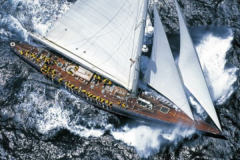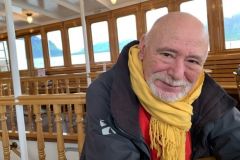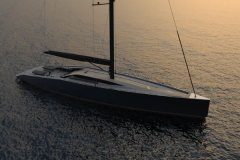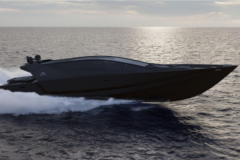Desires to sail
For Marc Lombard, boating is a real passion, and has been since he was very young. "I drew boats in my school notebooks for quite a few years."
It was on board the family dinghy that he began sailing before enrolling in an offshore cruising school to "go further." He then began to sail more and more, in parallel with his high school studies. He then became a skipper and trained sailors. After high school, his desire to sail took precedence over his desire to continue his studies, despite the recommendations of his family - all architects - to pursue this path.
"There was no school for naval architects. So I left home to go and build boats in the Hervé shipyard in La Rochelle. I found it interesting and important to know how to build boats. It was very interesting indeed, but I realized that working as a laborer was not for me. It's actually quite far from sailing and the work is not exciting every day."
Finally, after researching with his family, he discovered a school that trains naval architects in England, and went overseas to follow the training.
A decisive meeting
At the same time, he still sails a lot, especially for the convoying of racing boats. This is how he met Mike Birch.
"At the time, he was a conveyor belt. We did a lot of sailing together and got along very well. When I graduated, he offered me a job at Walter Greene's boatyard in Maine, USA, to build his molded wood racing boat. I did the plotting and drawings for the boat."
On returning from his mission, Marc Lombard worked for three months at Philippe Harlé's in La Rochelle, but the two men did not get along.
A start in ocean racing
"As I knew quite a few people in the ocean racing world, I decided to set up my own agency in 1982 and found my first client. I designed racing boats, multihulls, for many years. Racing is a good way to learn discipline and rigor. You have to do things properly. It's been a lean period, but I've designed a few boats that have made their mark."
It is with the plans of Philippe Jeantot's IMOCA for the first Vendée Globe, in 1990, that his activity really starts.
"I designed his boat, but it also allowed me to enter the Privilege Marine shipyard, which was called Jeantot Marine at the time. Right away, I started designing several boats for them."
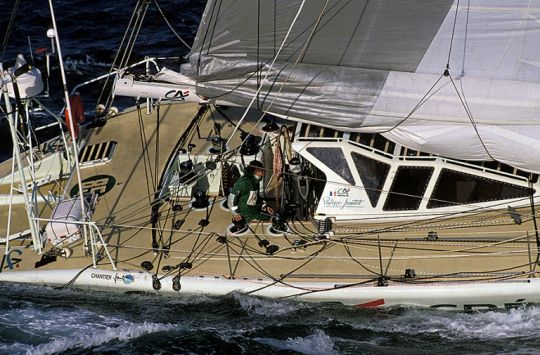
The beginning of the pleasure boats
In the mid-90s, he was joined by Eric Levet, his sidekick in the agency, who is still part of the team 25 years later.
"Today, the team has grown. We are about fifteen people. We have multiplied our skills for racing and cruising: engineering, design, architecture... We know how to do everything."
Today, the bulk of the activity is devoted to the production of boats for shipyards. Privilège Marine was the first, then today, the 3 biggest manufacturers on the market: Bénéteau, Hanse (which bought Privilège) and Bavaria (which bought Nautitech).
"We also have some foreign job sites. When we have a foot in a yard and we work well, we continue with them. There are some yards that we've followed from almost the beginning, like Privilege or RM."
The firm also works on individual projects, depending on the owners' requests.
"We do fairly little prospecting. People come to us. In single-handed boats, it's a fashion phenomenon. We designed a lot of racing boats until 2005, but we slowed down. It's not easy to work in this environment for human reasons. It's often the latest fashionable architect who wins for the new stuff."
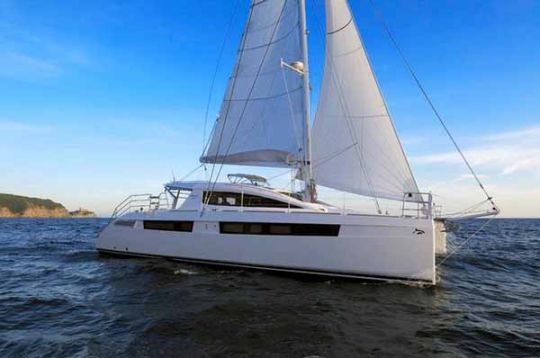
An all-rounder's job
The advantage of the naval architect's profession is the variety of projects and therefore of skills.
"Paradoxically, we started with sailing and we still love sailing boats, but we have diversified. Naval architecture is the oldest profession in the world. You have to imagine that the Neanderthal man had to build boats to cross the rivers. Today, fishing, trade, cruising, everything interests me. I am not a sectarian. I like to learn new things and to invest in new fields.
In racing, we look for performance. For sailboats, habitability, interior architecture, cost and design, user-friendliness, life on board. For powerboats, performance, consumption, environmental impact... But finally, also aspects common to sailing, but from another angle.
Everything has an influence on the job you do. You learn so many things in other fields. We are at the service of a primary function: the wing, the deck plan, the resistance, the studies of CFD simulations.
Finally, the architect's job is to implement an object, a habitat so that it responds to a certain function. It can change, but we must adapt a design to what we want it to do. It works the same way for a 6,000-person cruise ship as it does for a sailboat."
Marc Lombard Design has carried out several design studies for the STX shipyard, which builds large ocean liners.
"They have very good architects, but they asked us for design advice. There is room for all projects and a real interest in studying different boats. I'm excited about changing environments. Plus it makes the business stronger to diversify the clientele: racers, billionaires, adventurers (for one-off projects), commercial boats, yachts, sailing freighters, fishing, although our projects have never really come to fruition. But we have some interesting ideas about it and we don't despair of touching this area."
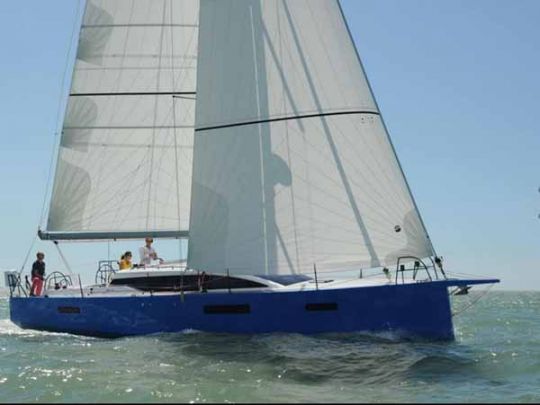
A transversal structure
The particularity of Marc Lombard's agency is its transversality. Although there are dedicated project managers, everyone interacts in the projects: structural engineers, CFD calculations, draftsmen, 2D/3D modelers, architects, designers..
"We like to have projects go through all hands. Everyone brings their own ideas to the projects. I'm starting to get some experience and I like having new blood on the team. They bring a different vision, because they are younger. Especially on the design, which I do less now. I'm doing design from a 60-year-old guy, whereas 30-year-olds have a different attitude. I like that every new design idea, which shocked me at the beginning, is worked on to make it coherent with the function, and to implement it as well as possible. I play a bit of a project manager role. I pick up the ideas to make them come to fruition in the best way possible."
A job with passion and a technical background
Today, what makes a good naval architect is first of all the training, but above all the passion for boats, for the maritime culture.
"You need a minimum of training, a technical background. Within the agency, I mainly have people who have graduated from engineering or architecture schools. The second important point is to know the boats. I couldn't draw a car, but I can draw a boat because I know them. There is a culture to implement, you have to sail and be passionate, otherwise you make bad decisions.
After that, all specializations are welcome: mechanical engineering to work on the structure, theoretical calculation to do simulation on hulls, design, architecture, preliminary design. Everyone finds their place and we try to have people in all fields."








